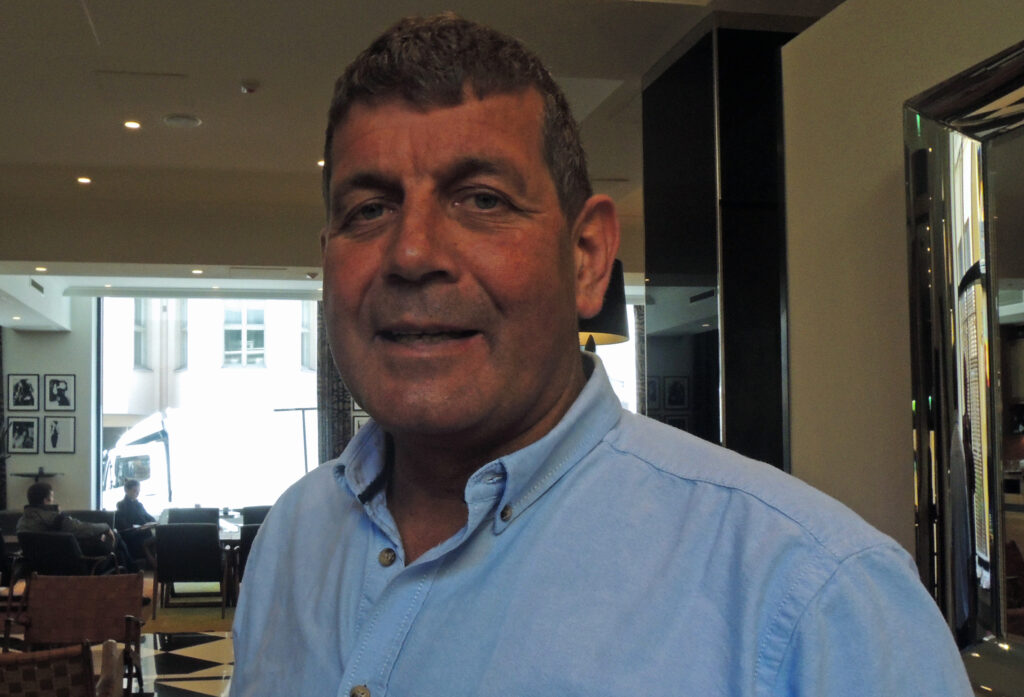Ireland eyeing Finnish forest bioeconomy

Andrew Doyle, the Irish Minister of Food, Forestry & Horticulture, believes in sustainable forestry in battling climate change. Doyle visited Finland this summer for ideas to take home as part of Ireland’s new bioeconomy strategy.
“Our aim is to strengthen sustainable forestry and increase tree planting. These measures represent good climate policy and provide opportunities for extensive development of bioeconomy,” says Minister Doyle.
By strengthening its forest-based bioeconomy Ireland also wishes to increase carbon absorption in forests and develop materials to replace oil-based products, examples of which, according to Minister Doyle, include wood-based textiles and wood construction.
“There is much to learn about the production of new materials and for this we need a bioeconomic strategy,” the Minister adds.
Wanting to learn more of the Finnish bioeconomy strategy, Mr Doyle visited Finland in June as guest of the European Forest Institute. He familiarised himself with a variety of bioeconomy topics ranging from logging to further processing. In the North Karelia region, for example, he visited the Eno Energy Cooperative.
“Finland a widely recognised pioneer”
The meetings with forest owners, representatives of industry, and researchers were able to convince the Minister of how diversely Finns are developing their forest-based bioeconomy.
“Finland is a well-known pioneer in innovative bioeconomy, with great potential for cooperation with other countries,” Mr Doyle says, emphasising cooperation on the European level.
“Europe should step up and show the way for the rest of the world here. In energy production, for example, we are still overly dependent on fossil fuels. Considering the global political instability and the overuse of resources, Europeans should improve their energy self-sufficiency increasingly based on biofuels.”
According to Mr Doyle, the European Forest Institute in Joensuu plays a key role in increasing cooperation between Europe’s forest countries. “The international events organised by the institute bring together key decision-makers of European forest policy.”
Opportunities in battling climate change not sufficiently recognised
According to Mr Doyle, the opportunities presented by a forest-based bioeconomy are not understood or recognised sufficiently in discussions on climate change because the functioning of sustainable forestry is not recognised. More information should be offered, starting from the basic principles such as that of always planting a new forest after one is felled.
“The public must be informed to make them interested in the subject. That will help add pressure of transferring to bioeconomy and increasing its acceptability,” says Doyle, and gives an example of how “in Ireland, more than 80% of farmers in agricultural and food production have committed to bioeconomy programmes.”
Consumers are already familiar with the markings on food packages through which it is possible to trace the product back to an individual farm. “We can apply the same practice to developing a forest-based bioeconomy that will increase understanding of, for example, Finnish family-owned sustainable forestry.”
According to Mr Doyle, Finland has been successful in demonstrating the sustainability of silviculture through forest certification, with 90% of all harvested wood coming from certified forests.
Ireland’s productive forest area totals 300,000 hectares, making up roughly 5% of the total land area. According to Mr Doyle, it is quite possible to significantly increase logging without endangering sustainability.
“Within the next 15 years, we aim to double our logging to 8 million cubic metres,” says Doyle.
Kirjoita kommentti